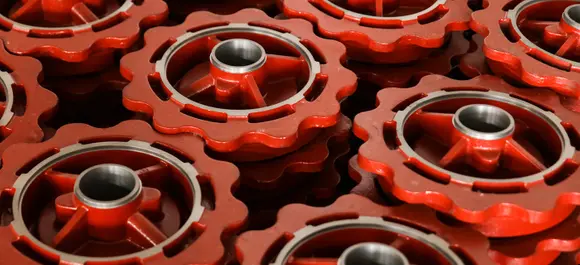Mobile:+86-311-808-126-83
Email:info@ydcastings.com
Design and Analysis of Inlet and Exhaust Manifold Systems for Enhanced Engine Performance
Inlet and Exhaust Manifold The Unsung Heroes of Internal Combustion Engines
In the world of internal combustion engines, the terms inlet manifold and exhaust manifold often appear, yet their significance is frequently overlooked by those outside of automotive engineering. These vital components play crucial roles in the performance, efficiency, and emissions of an engine, acting as pathways for air and exhaust gases. Understanding their function and importance is key to appreciating the engineering marvels that power our vehicles.
The Inlet Manifold
The inlet manifold, also known as the intake manifold, serves a primary purpose to distribute the air-fuel mixture to the individual cylinders of the engine. This component is typically located on the top of the engine, connecting the throttle body to the cylinders. As air enters through the throttle body, the inlet manifold ensures an even distribution to each cylinder, which is essential for optimal combustion.
Understanding how the design of the inlet manifold affects engine performance is critical. A well-designed manifold must facilitate smooth airflow while minimizing turbulence. Engineers often employ various techniques like incorporating a plenum chamber to help equalize pressure and optimize the air-fuel mixture reaching each cylinder. Furthermore, the length and diameter of the runners within the manifold can significantly impact engine performance at different RPMs, allowing for better torque or horsepower depending on the specific needs of the engine.
The Exhaust Manifold
On the flip side, the exhaust manifold collects and directs the exhaust gases produced during combustion away from the engine. Positioned on the opposite side of the inlet manifold, it channels the exhaust from the cylinders to the exhaust system and ultimately to the atmosphere. The design of the exhaust manifold is also critical; it must withstand high temperatures and pressure while facilitating efficient gas flow.
inlet exhaust manifold

Just like the inlet manifold, the design of the exhaust manifold can significantly influence engine performance. An efficiently designed exhaust manifold reduces back pressure and allows exhaust gases to exit quickly, promoting better engine breathing and performance. High-performance engines often utilize tubular headers rather than traditional cast exhaust manifolds to achieve better flow characteristics, enhancing both horsepower and torque.
Interplay Between Inlet and Exhaust Manifolds
The relationship between the inlet and exhaust manifolds is vital for overall engine efficiency. When the exhaust gases leave the cylinder, they create a pressure drop, which can affect the air being drawn into the cylinder for the subsequent power stroke. This interaction is why performance tuners and engineers frequently optimize both manifolds together. A balanced setup ensures that each cylinder operates efficiently, maximizing power output and minimizing emissions.
Conclusion
In summary, the inlet and exhaust manifolds are critical components that deserve more recognition within the automotive industry. Their design and functionality greatly influence the performance, fuel efficiency, and emissions of an internal combustion engine. Whether in everyday vehicles or high-performance machines, the engineering behind these manifolds plays a pivotal role in the intricate dance of air and fuel that powers our engines.
Understanding the intricacies of inlet and exhaust manifolds can enhance one’s appreciation for automotive technology and underline the importance of precise engineering in achieving optimal performance. As the automotive landscape continues to evolve, especially with the rise of electric vehicles, the legacy of internal combustion engines and their manifold systems will remain a foundational aspect of automotive heritage.
-
Why Is Choosing the Right Motor Housing Critical for Engine Performance?NewsJul.18,2025
-
Which Impeller Types Best Optimize Your Pump’s Efficiency?NewsJul.18,2025
-
Optimize Maintenance Efficiency with Durable Oil Catch SolutionsNewsJul.18,2025
-
Maximize Pump Performance with Precision-Engineered ComponentsNewsJul.18,2025
-
Elevate Industrial Flow Systems with Precision-Engineered ComponentsNewsJul.18,2025
-
Boost Durability and Functionality with Precision Power CastingsNewsJul.18,2025











